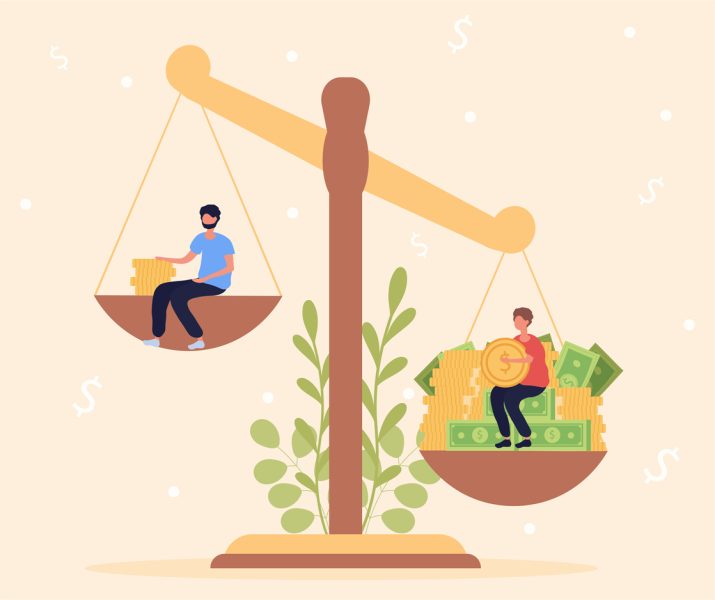
Rich-poor gap increasing in India, disparity worse in rural areas: State of Inequality report

Highlighting a vast income distribution disparity in the country, the latest State of Inequality in India Report by the Economic Advisory Council to the Prime Minister shows a bleak picture, reports NDTV.
While India has made remarkable strides with regard to access to necessities and adequate water supply and sanitation, the report showed the measures for income parity, poverty, and employment needs to be improved significantly.
The top one per cent of the country accounts for 5 to 7 per cent of the national income, the report says, while around 15 per cent of the working population earns less than Rs 5,000 a month.
Also read: Adani overtakes Warren Buffet to become world’s 5th richest person
Those earning an average of Rs 25,000 per month are in the top 10 per cent of the total wages earned bracket, which accounts for about 30-35 per cent of the total income. Also, the report shockingly reveals, the income of the top 1 per cent shows a growing trend while that of the bottom 10 per cent is shrinking.
According to the National Family and Health Survey (NFHS) 2015-16 data, there is a huge gap in household wealth between rural and urban spaces, NDTV reports. Notably, more than 50 per cent of the households fall in the bottom proportion of wealth concentration (about 54.9 per cent).
The disparity is worse in rural areas, the report shows.
All-round growth a distant dream
A recent working paper by the World Bank, ‘Poverty in India Has Declined over the Last Decade But Not As Much As Previously Thought’, by Roy and Van der Weide, highlights that extreme poverty in India has declined by 12.3 percentage points from 2011 to 2019 but at a slower rate than observed between 2004 and 2011.
While India aims to become a $5 trillion economy based on a gross domestic product (GDP), the number of poor symbolises how far a country is in achieving its social progress and growth goals.
To bridge those concerns, the report recommended the implementation of the principles of the Mahatma Gandhi National Rural Employment Guarantee Act 2005 (MGNREGA) in urban areas and the adoption of universal basic income (UBI).
Under the UBI proposal, all citizens will regularly receive equally set financial transfer grant from the government. A basic income can be implemented nationally, regionally, or locally and is done without a means of income test.
Also read: Extreme poverty in India fell 12.3% from 2011 to 2019: World Bank paper


